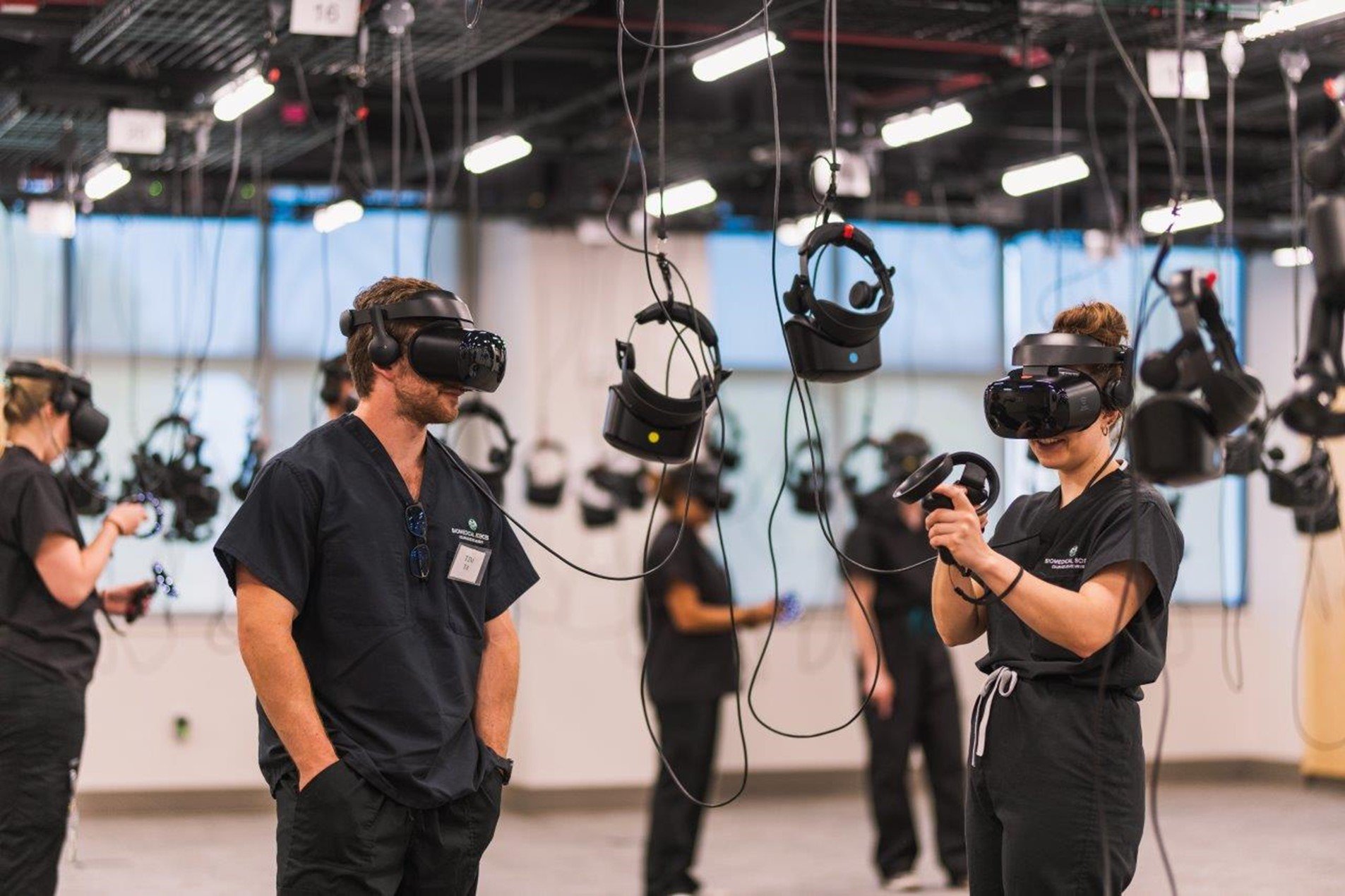VR FOr Medical Education
A Research and Development Startup reimagining biomedical education and medical imagingProject Role: Software Developer
Technologies: Unity3D, C#, Vive, Oculus, Hololens
Demo: https://www.youtube.com/watch?app=desktop&v=r9w1MZAOv_g
Articles:
Under the Goggles, Road to VR, Game Changer: Video Demonstration, Collaborative VR Lab Implementation
During the fall of 2018, I joined Colorado State University's Virtual Reality Anatomy Lab (now Perspectus VR, an early stage startup) to build the educational graphical user interface for biomedical sciences students, instructors, doctors, and patients. The CSU VR Anatomy Lab enables medical students and doctors to volumize and explore medical scans, X-rays, and preset anatomical figures in a 3D environment. As a software developer on a team of five, I enabled secure learning and testing modes for both individual and group education in the VR lab, and for personal use on 2D devices such as iPads and iPhones, and the 3D app.
This enables more robust and enduring learning in pre-medical students in the first-of-its-kind 100 headset anatomy education lab at Colorado State University. It's also been adopted for use by medical students at the University of Colorado Medical School and other universities across the country, and allows for more in-depth doctor-patient conversations and understanding at medical centers in Colorado and Japan, such as UCHealth.
Challenges
One of our key challenges was developing the software for seamless visualization and information retention across single user and multi-user interfaces. For example, how can we enable instructors to interact with their students while in immersive environments or student-to-student information interaction, while still allowing individual training away from the lab? Similarly, how can we help doctors effectively explain three dimensional scans to patients?
Questions
Can we develop new ways to think about visual healthcare data, and enable doctor-patient communication as well as premedical student education outcomes?
Can we enable collaboration through multi-layered information?
What are alternative forms of data and rich interactions that can improve human outcomes and inclusivity?
Outcomes
While we tested many forms of group learning interactions, color and structural schemes, as well as several device platforms, we found that while 3D anatomy education vastly improves student outcomes and patient understanding, there are different affordances and design implications that vary between devices, such as number of students in each group, key testing control design, and user education. VR anatomy education has also proved to be extremely helpful during the COVID-19 pandemic.
Through this project, I developed a deep interest in multi-user education and storytelling, in addition to skills in Unity, C#, and 3D graphical user interface design. As we move into the age of visual storytelling and alternative forms of information, I look forward to building collaborative and interactive software that enables innovative ways of layering information and understanding it from different angles.

